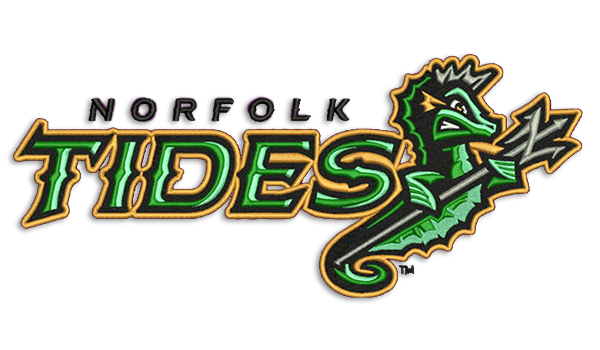Specialist Digitizing for Embroidery: High-Quality Designs
Specialist Digitizing for Embroidery: High-Quality Designs
Blog Article
Streamlining the Art of Needlework Digitizing: Step-by-Step Overview
As technology proceeds to advancement, the digitization procedure has come to be a lot more available, allowing fanatics to bring their intricate layouts to life with ease. In this overview, we will unwind the intricacies of needlework digitizing, breaking down each action methodically to enhance the process and equip both newbies and experienced embroiderers alike.
Recognizing Needlework Digitizing Software Application
Needlework digitizing software functions as an important device for transforming elaborate layouts right into electronic styles suitable with needlework devices, assisting in precise stitching and personalization. This customized software application permits customers to import various picture data layouts, such as JPG or PNG, and transform them into embroidery machine-readable styles like DST, EXP, or PES - Digitizing for Embroidery. By making use of features like stitch editing, rug choices, and string shade option, digitizing software enables users to control every aspect of the style process
Additionally, progressed needlework digitizing software provides tools for producing complicated styles, readjusting stitch thickness, and including elaborate information. Customers can additionally sneak peek the layout prior to sewing it out, making sure precision and decreasing errors. In addition, lots of software application programs give automated functions that assist enhance the digitizing procedure, conserving time and initiative.
Understanding the capacities of needlework digitizing software program is essential for achieving premium lead to embroidery tasks. By understanding this tool, embroidery enthusiasts and specialists can release their creativity and bring complex styles to life with accuracy and efficiency.

Picking the Right Layout File
After acquainting on your own with the abilities of needlework digitizing software program, the next essential action in the procedure is selecting the appropriate design declare your job. Digitizing for Embroidery. When choosing a design data for needlework digitizing, it's necessary to take into consideration the intricacy of the layout, the size of the last item, and the type of material you will be working with
For elaborate layouts with fine information, a high-resolution photo or vector documents is suggested to make sure that the embroidery maker can accurately reproduce the layout. Furthermore, the dimension of the end product plays a significant role in selecting the best style file. Larger styles may require higher resolution files to preserve clarity and sharpness.
Furthermore, the sort of material you will certainly be stitching on influences the choice of layout file. Different textiles might need modifications in the style visit this page documents to make certain that the stitches are properly aligned and the design looks like intended. By carefully selecting the appropriate style documents based on these aspects, you can set yourself up for an effective embroidery digitizing process.
Digitizing Tools and Strategies
Making use of specialized software program and precision techniques, digitizing devices are vital in transforming detailed look at this now designs into embroidery-ready data. Embroidery digitizing software program, such as Wilcom, Hatch, or Embrilliance, provides the necessary platform to transform artwork into stitch data. These programs supply features like stitch modifying, padding choices, and lettering tools to make sure the layout equates seamlessly onto fabric.
One of the essential methods in digitizing is developing a clear course for the embroidery equipment to comply with. This involves digitizing each component of the style with precision, figuring out stitch kinds, thickness, and directions. By utilizing devices like digitizing tablets or software-specific plugins, embroiderers can achieve a high level of precision in their digitized styles.
Additionally, understanding the art of padding sewing is critical for generating top quality embroidery. Underlay stitching maintains the textile and creates a structure for the layout, making sure that the final product is both aesthetically attractive and lasting. By understanding these digitizing devices and techniques, embroiderers can raise their craft and bring elaborate designs to life with accuracy and efficiency.
Personalizing Stitch Types and Instructions
The selection of stitch types can significantly influence the general look and texture of the stitched design. By purposefully combining these stitch types, embroiderers can attain depth and measurement in their designs.
Additionally, the instructions of stitches plays an essential function in improving the visual charm of the final embroidery. By exploring with different stitch angles and patterns, embroiderers can bring their designs this post to life with amazing detail and ins and out.
Testing and Refining Your Digitized Design
To ensure the precision and top quality of your digitized layout, thorough testing and improvement are necessary action in the needlework digitizing process. Once you have finished the digitization of your layout, it is vital to check it prior to proceeding with the actual embroidery. Examining permits you to determine any type of prospective issues such as thread breaks, sew density troubles, or layout distortions that might affect the final outcome.

After testing, it is essential to improve your digitized layout based on the responses from the test sew-out. This might entail tweaking sew settings, adjusting densities, or making changes to the total layout to achieve the preferred end result. By iterating through screening and improvement, you can adjust your digitized layout to perfection prior to progressing with the real embroidery procedure.
Final Thought
In final thought, understanding the art of embroidery digitizing calls for an extensive understanding of the software, choosing the right design documents, using digitizing devices and techniques, tailoring stitch types and directions, and testing and refining the digitized style. By adhering to these actions, embroiderers can simplify the digitizing procedure and produce top quality embroidered layouts with accuracy and effectiveness.
Report this page